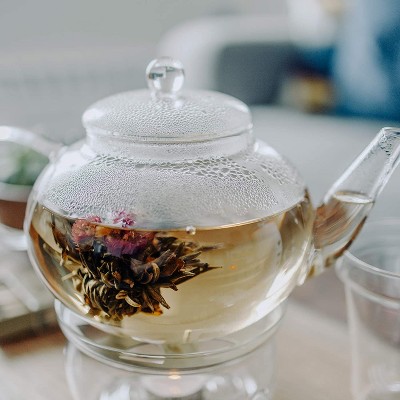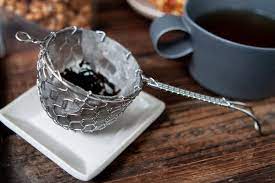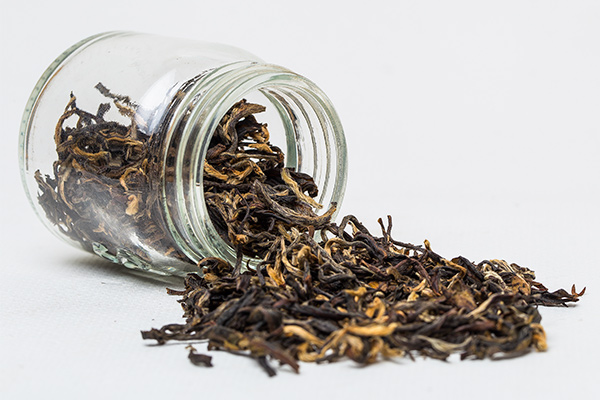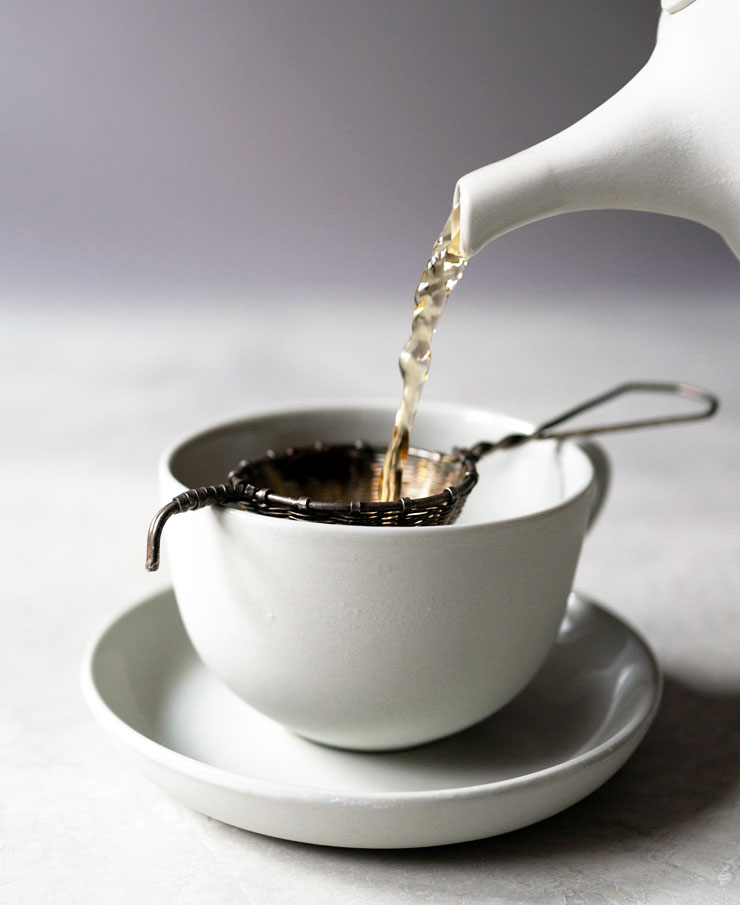The correct usage and steps of brewing tea how to make tea tastes good?
How can I make a good cup of black tea? In every black tea-related occasion, this is the most concerned issue for almost every beginner who is deeply interested in black tea.
Making tea is of course a discipline. Although as mentioned earlier, compared with other kinds of tea, the brewing of black tea seems to be a little more casual (which is one of the reasons why I like black tea); however, if you can pay more attention to and pay more attention to some basic concepts and steps that need to be paid attention to, you can often get an unexpected taste!
I think I will always remember that in my black tea class or tea party, when I led everyone step by step to slowly pour out a cup of black tea step by step, "Wow ∼, it tastes good!" "the exclamations one after another under the podium really made me smile.
The following is the basic tea-making method that I have summed up after multi-reference comparison and years of trial and accumulation. I would like to share with you here:
Basic tea set preparation
[teapot]
The optional round pudgy ceramic teapot not only has good heat preservation and heat transfer, but also leaves enough space for tea to stretch. Some teapots on the market also have filters that can be taken out at any time, although it is relatively easy to control the concentration and prevent the tea from flowing into the cup. However, according to experience, if the filter space is insufficient, the tea can not fully stretch, often reducing the flavor, so it is best to avoid it.

[measure teaspoon]
Teaspoons for measuring tea are available in places where tea sets are generally specialized. the weight of one spoon is about 2.5 grams, but you can also find a suitable teaspoon at home and replace it after measuring the quantity.
[straining tea ladle]
Shaped like a soup ladle with a short handle, it is mounted on a cup to filter out the tea dregs. There are many forms, can be divided into filter mesh or hole type, the former is more practical, very fine tea can be filtered out, the latter has more atmosphere. It can also be divided into those with a base, without a base, or the dipper body itself is connected with the base. You can choose the form you are accustomed to on the premise.

[teacup]
It is best to have a wide mouth and narrow bottom shape, especially the cup with thinner walls, which can not only show the beauty of brown and brown, but also bring excellent touch to the touch of lips and hands.
[other]
Teaspoon, sugar & milk cup, cotton cover, tray, teapot mat, hot kettle, dim sum fork, jam spatula, pastry tray, pastry rack, tea napkin, ringing bell (call tea friends for tea time! ). Can be purchased step by step according to individual needs
Basic black tea brewing method
[prepare for action]
Know your pot: first measure the amount of water from the cup to determine the height to which you should pour the tea in the future.
3 ∼ 5 grams of tea need about 360cc of water, can be washed out of the general cup of about two cups of tea (actually into the cup about 160cc).
[boil]
To use fresh, non-overnight, or even fresh water from the faucet, it is more appropriate to use soft water, that is, water with less minerals. It is best to boil water at one time, so it is best to avoid using boiling machines to boil water again and again.
Before placing the tea, fully warm the pot with boiling water.
[amount of tea leaves]
Generally speaking, it takes about 3 ∼ 5 grams of tea for two cups of tea. The amount of tea can be increased or decreased depending on the status of individual tea as well as taste, preference and condition.
But unless a special electronic scale is used, it is difficult to measure the weight accurately. Generally rely on visual observation and experience, basically, more than loose, complete leaves on the tea can be more (slightly raised on the teaspoon), the fine broken tea is less (flat spoon or even slightly less).

[making tea]
The most commonly used is boiling water. But if it is a more delicate, green tea, such as Darjeeling early spring tea, the temperature is as low as possible. I often cool down a little to make tea depending on the condition of the tea.
The most basic time is 3 minutes, but depending on the tea, the time for those who break it into small pieces is shorter (2 ∼ 2.5 minutes), and the time for those with complete leaves and those with large leaves is slightly longer (3.5 ∼ 4 minutes). Timers or hourglass can be used to assist in timing.
When pouring hot water into the pot, try not to pour it from the center, so that the water column is slightly inclined to the side of the pot mouth, which helps to make the tea rotate beautifully in the pot and stir up a wonderful aroma.
[pour out]
Hold the pot in one hand and the tea ladle in the other to filter out the tea. The movement should be gentle and slow, if the teapot opens a little bit more slowly, and the smaller one opens faster.
In order to unify the thickness of the whole pot of tea, according to the British tea-making etiquette, you can gently rotate and shake the pot before pouring the tea. But I don't think it is very effective. My private house method is: if it takes a little more effort, I will take the Chinese way of making tea, pour it all into another teapot, and then share it with everyone; to save effort, I will gently stir the teaspoon in the pot before pouring it, to make sure that each cup of tea tastes the same.

[recoil]
After drinking the first pot, if you want to add another pot, follow the above steps to flush the boiling water into the pot again. But the soaking time can be slightly extended to 1 ∼ 1.5 minutes.
The taste of the second tea is usually lighter and the aroma is less obvious. As a result, if you hope to continue to brew a few more times, the amount of tea leaves can be slightly increased and the soaking time can be slightly shortened when making tea for the first time, so that the second and third bubbles can be reserved for more room and space for aftertaste.
If so, make a pot of good black tea!
Important Notice :
前街咖啡 FrontStreet Coffee has moved to new addredd:
FrontStreet Coffee Address: 315,Donghua East Road,GuangZhou
Tel:020 38364473
- Prev

What is the best brand of tea in the top ten tea producing countries in the world? what is the history and culture of tea in each country?
The annual consumption of tea exceeds 3 million tons, making it the second most popular drink after water. It can be said that it occupies an important position in culture and economy. As a drink, it has many different cultures. As a kind of agricultural product, tea industry is an important economic factor in its producing area. The best tea producing area in the world [China] ranks first in tea production in the world.
- Next

What is the meaning of OP BOP FOP acronym in black tea? what is the best level for the international classification of black tea?
When it comes to the grade of black tea, it is usually followed by the name of the producing area, such as OP, BOP, FOP, TGFOP and so on. Friends should be no stranger to this. Most of these graded terms appear in single-product black tea that is not mixed (meaning different origin, season, or even kinds of tea are mixed together) and made from "Orthodox" traditional black tea system. In the most
Related
- Beginners will see the "Coffee pull flower" guide!
- What is the difference between ice blog purified milk and ordinary milk coffee?
- Why is the Philippines the largest producer of crops in Liberia?
- For coffee extraction, should the fine powder be retained?
- How does extracted espresso fill pressed powder? How much strength does it take to press the powder?
- How to make jasmine cold extract coffee? Is the jasmine + latte good?
- Will this little toy really make the coffee taste better? How does Lily Drip affect coffee extraction?
- Will the action of slapping the filter cup also affect coffee extraction?
- What's the difference between powder-to-water ratio and powder-to-liquid ratio?
- What is the Ethiopian local species? What does it have to do with Heirloom native species?

